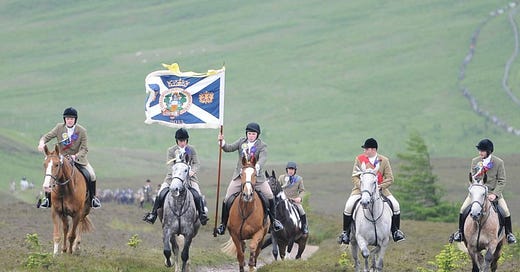The Debatable Land #22: Hail Smiling Morn
It is my home town's Big Day on Friday: this is why it, and other occasions like it, still matter.
A special edition of The Debatable Land this week to celebrate the fact this is Selkirk Common Riding week; an annual celebration stretching back to the middle ages and all the more special this year for resuming the traditions after two years of covid-caused interruptions.
Place and the Permanent Things
It is early summer, the time of year when the roses bloom again, and in the small hours of the first Friday after the second Monday in June, Selkirk begins to stir. A flute band marches through this small, but ancient, Royal Burgh heralding, as dawn breaks, the start of the latest iteration of Selkirk’s “day of days”. For this is the day of the Common Riding, Selkirk’s annual celebration of itself.
The flute band will awaken the town’s Standard Bearer, the young man - single and of good repute - charged with leading the 400-strong mounted cavalcade inspecting the boundaries of the town’s common land. He will carry the town’s flag as he does so and is charged with returning it as he acc…



